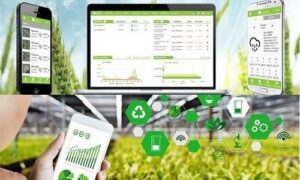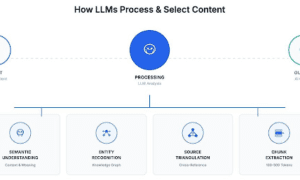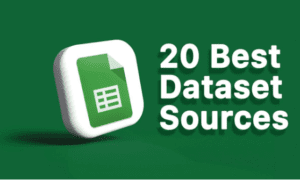Farmers face mounting pressure to optimize resources, reduce costs, and boost productivity. Enter farm management software—a game-changing tool designed to streamline operations, enhance decision-making, and empower farmers to meet modern challenges head-on. This comprehensive guide explores how this technology is reshaping farming, its key features, benefits, and why adopting it is no longer optional for sustainable agriculture.
What Is Farm Management Software? A Closer Look
Farm management software (FMS) is a digital platform that helps farmers plan, monitor, and analyze every aspect of their operations. From crop planning and livestock tracking to financial management and equipment maintenance, these tools consolidate data into a single, user-friendly interface. By integrating real-time insights, FMS enables farmers to make informed decisions, reduce waste, and maximize yields.
The rise of precision agriculture has further accelerated its adoption. Farmers now rely on data-driven strategies to combat climate volatility, labor shortages, and fluctuating market demands. For example, GPS mapping allows precise field monitoring, while weather forecasting tools help avoid crop losses. In essence, FMS bridges the gap between traditional farming and cutting-edge technology, creating a seamless workflow for modern agribusinesses.
Key Features of Modern Farm Management Software
Not all farm management tools are created equal. However, the most effective platforms share core functionalities tailored to address diverse agricultural needs. Below are the standout features transforming farms worldwide:
Comprehensive Crop and Livestock Monitoring
Advanced sensors and IoT devices collect granular data on soil health, crop growth stages, and animal behavior patterns. For instance, moisture sensors detect irrigation needs, while motion-tracking collars monitor livestock health. This real-time information helps farmers detect issues early—such as pest infestations or nutrient deficiencies—and take corrective action before losses escalate.
Streamlined Financial and Inventory Management
Tracking expenses, profits, and inventory manually is time-consuming and prone to errors. FMS automates budgeting, invoicing, and supply chain management, providing farmers with a clear financial overview. Additionally, some tools integrate with popular accounting software like QuickBooks, ensuring seamless bookkeeping and tax compliance.
Proactive Equipment Maintenance Scheduling
Downtime due to machinery breakdowns can cripple productivity during critical farming seasons. Modern FMS platforms send automated alerts for routine maintenance, track repair histories, and even predict equipment failures using AI algorithms. This proactive approach minimizes unexpected disruptions and extends machinery lifespan.
Simplified Compliance and Reporting
Regulatory requirements in agriculture are becoming increasingly stringent. Farm management software simplifies compliance by generating detailed reports on chemical usage, land stewardship practices, and labor hours. This feature is particularly invaluable for audits and certifications like organic farming or GlobalG.A.P.
Real-Time Weather and Market Analysis
Access to hyper-local weather updates and global market trends empowers farmers to adjust strategies dynamically. For example, predicting a drought might prompt earlier harvesting, while rising commodity prices could influence storage or sales timing. By aligning decisions with real-world conditions, farmers maximize profitability and resilience.
Why Farmers Are Embracing Farm Management Software
The shift toward digital farming isn’t just a trend—it’s a necessity. Here’s why agricultural professionals are prioritizing FMS adoption:
Improved Operational Efficiency
Manual record-keeping and guesswork are relics of the past. Automated workflows save hours each week, freeing farmers to focus on strategic tasks. For example, drone-based field scans can replace days of manual soil testing, while automated irrigation systems optimize water usage with minimal oversight.
Significant Cost Reduction
By optimizing resource use—such as water, fertilizers, and fuel—farmers minimize waste and lower operational costs. Precision planting tools, guided by FMS data, ensure seeds are spaced correctly, reducing overlap and unnecessary seed purchases. Over time, these savings compound, boosting overall profitability.
Enhanced Sustainability Practices
Consumers and governments increasingly demand eco-friendly farming methods. FMS supports sustainability by monitoring carbon footprints, reducing chemical runoff through precision spraying, and promoting regenerative techniques like cover cropping and crop rotation. Consequently, farms can meet environmental standards while maintaining productivity.
Robust Risk Mitigation
Unpredictable weather, pest outbreaks, and market swings pose significant risks. With predictive analytics, farmers model scenarios and develop contingency plans. If a frost is forecasted, FMS might recommend covering crops or adjusting irrigation schedules. Similarly, market trend analysis helps lock in favorable prices before demand shifts.
Overcoming Challenges in Adopting Farm Management Software
While the benefits are clear, transitioning to digital tools isn’t without hurdles. Below are common challenges and practical solutions:
High Initial Investment Costs
Advanced software and IoT devices require upfront investment. However, many providers now offer subscription-based pricing models, spreading costs over time. Additionally, governments and NGOs often provide grants or subsidies to encourage agri-tech adoption, easing financial burdens.
Technical Complexity and Training
Farmers unfamiliar with digital tools may struggle during onboarding. Leading FMS companies address this by offering hands-on training programs, video tutorials, and 24/7 customer support. Starting with simpler features—like digitizing financial records—builds confidence before tackling advanced modules.
Data Security and Privacy Concerns
Storing sensitive farm data online raises valid cybersecurity questions. Reputable platforms use military-grade encryption, multi-factor authentication, and comply with regulations like GDPR to safeguard information. Farmers should also regularly back up data offline for added security.
Resistance to Cultural Change
Transitioning from traditional methods to data-driven farming requires mindset shifts. To ease this, farmers can pilot FMS on a small plot or livestock group first. Demonstrating tangible results—like higher yields or cost savings—helps build buy-in across teams.
The Future of Farm Management Software: Emerging Trends
AI-Powered Predictive Insights
Artificial intelligence will analyze historical and real-time data to forecast crop yields, disease outbreaks, and optimal harvest windows with unparalleled accuracy. Imagine an AI assistant advising on the best planting dates based on soil health, weather patterns, and market forecasts.
Blockchain for Transparent Supply Chains
Consumers increasingly demand traceability in food production. Blockchain integration will enable end-to-end visibility, tracking produce from seed to supermarket. Each step—planting, harvesting, processing, and shipping—will be recorded immutably, building consumer trust and brand loyalty.
Integration with Autonomous Machinery
Self-driving tractors, harvesters, and drones, guided by FMS, will revolutionize labor-intensive tasks. These machines will operate around the clock, adjusting routes and tasks based on real-time field data. As a result, farms can address labor shortages while boosting efficiency.
Climate Resilience Tools
With climate change intensifying, future FMS platforms will prioritize resilience. Features like drought prediction algorithms, carbon sequestration tracking, and water-use optimization will help farmers adapt to volatile conditions while maintaining yields.
How to Choose the Right Farm Management Software
Selecting the best platform depends on your farm’s size, needs, and budget. Consider these factors:
- Scalability: Can the software grow alongside your operation?
- User-Friendliness: Is the interface intuitive for your team’s tech proficiency?
- Customization: Does it allow tailoring to specific crops, livestock, or regional regulations?
- Support: Are training resources and responsive technical assistance available?
Popular options include FarmLogs for small to mid-sized farms, Granular for large agribusinesses, and Agrivi for organic and specialty crop growers. Many providers offer free trials, so test multiple tools to find the perfect fit.
Conclusion
Farm management software isn’t just a tool—it’s a lifeline for modern agriculture. By harnessing data, automation, and predictive analytics, farmers can overcome industry challenges while boosting productivity and sustainability. Whether you’re a small family farm or a large agribusiness, adopting FMS is a strategic move toward a profitable, resilient future. The digital revolution in farming is here. Will you be left behind, or will you lead the charge?































